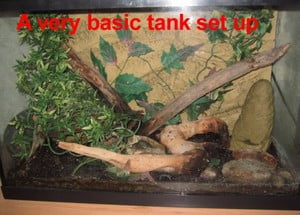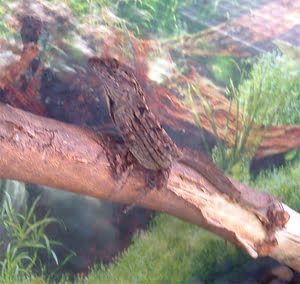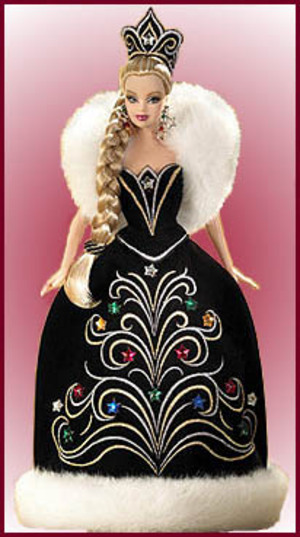Anole lizards are very common in the wild. Many people have them in their homes as pets. You can also find them in many pet stores. Most of the anoles you find in pet stores are caught in the wild. Once you have decided you’d like to observe and care for an anole as a pet, you should know the basics of caring for them. As someone who has owned anoles in the past and now owns an anole once again, I have studied and observed their proper care immensely. You will discover the basics by reading below.
Proper cage/enclosure:
To find out what size cage you will need, measure or estimate the length of your anole from the tip of it’s mouth to the tip of its tail. The cage should be at least twice that length longwise and at least the same length as your anole in width. A proper anole cage should either have fluorescent lighting or be placed in an area that is well-lit from the sun during the day. However, avoid sun lamps and heating lamps, as these can bake your anole. If you live in a warm, humid climate, you may opt for a plastic cage, rather than a glass aquarium, and keep your anole outside, thus eliminating the need for the lamp.
Once you have chosen your cage, you will need to make it into a home for your lizard. First, put regular, non-fertilized potting soil into the bottom of the cage. Slightly dampen the soil until it is moist, but not muddy or clay-like. This is an area that not all pet-care professionals agree on. Some recommend the soil and others will recommend a substrate made up of small wood chips or even specially-formulated substrate just for reptiles. With experience, I have found that the anoles prefer the soil. Many professionals have also agreed with me.
Next, put in a few rocks, twigs, and leafy branches for the anole to perch on, hide under, and climb on. Small logs are ideal as well. Avoid heated rocks and logs. These will cook your poor anoles. At least one twig or branch should extend from the bottom to the top all the way across the cage. This helps the anole feel like it is in its natural environment. Anoles enjoy climbing and perching. Leafy branches are especially ideal for the extending twig, as it will help to make the anole feel like it is in a tree.
If you have more than one anole, your cage size will need to increase dramatically or the lizards will harm or even kill each other. For two lizards, the cage should be at the very least, the size of a 10 gallon fish tank, although that is relatively small, so a larger size would be ideal. For three, you would need an even larger tank. Think of it like this. For each lizard added, add in tank size at least the size of a ten gallon tank. More would be even better.
What can anole lizards eat?
Anole lizards enjoy crickets, spiders, cockroaches, and some other arthropods. Anoles cannot eat potato bugs, centipedes, or millipedes. Whatever food you decide upon, be sure the insect size is no larger than half the size of your anole’s head. Through experience, I have discovered that most anoles prefer crickets and spiders. Spiders are a favorite, but since spiders are good escape artists and I don’t want them in the house, I use spiders as a treat whenever I see one. Since I use them in this way, as soon as I stick one in the cage, the lizards will immediately eat it. If you’d rather not catch any of your pet’s food, crickets can be bought from most pet stores and also from cricket farms online. The most I have paid for a batch of crickets was five dollars and that included about 100 crickets, plus shipping and handling.
How often do anoles eat?
Anoles need to eat every day. Some anoles may only consume one insect per day. Others will consume three or more. This will depend on what type of insects your lizard is eating and upon the individual lizard’s appetite. Start by placing five insects in the cage the first day. If there are any left at the end of the day, that was probably too many. Reduce the amount by one until there are none left at the end of the day. That will give you the correct amount. I also like to give a spider for a treat every other night if I find one. If you have more than one lizard, your first amount should be five insects per lizard.
Where do I keep the crickets?
I have discovered that if I keep the crickets in the same cage with the anole/s, they die sooner because they require different conditions. If you’d like to make your crickets last as long as possible until they need to be eaten, keep them in a small plastic container with only cricket food, 2 egg sections torn off of a cardboard egg carton, dry soil or wood chips, and a bottle cap full of water. They enjoy hiding under the egg carton piece. It also provides a good area for them to nest. If your crickets are lasting a long time, be sure to remember to clean their cage and keep their water dish full. Keep an extra plastic container to transfer them to while you clean the other. Prepare the new plastic container the same way as the other one. Once the other one is clean, keep it for the next cage cleaning. This way, you only need to transfer them once during each cleaning.
Do anoles require a water dish?
No. Anoles, especially those who are wild-caught, prefer to drink their water from leaves and branches. Mist the leaves and branches in their cage every day. This will leave behind water that they can sip.
Daily maintenance
Anoles need to be kept moist. They are used to a tropical environment. If the inside of the cage is not humid, you’ll need to mist your lizard once per day. To do this , simply mist a spray bottle onto your lizard from the top of the cage. Make sure the spray bottle is on the mist setting, as the lizard will not like it on the spray setting. If you see any droppings on the soil, scoop it out with a spoon. If the droppings are on the leaves, throw out the leaves and replace them with fresh ones. Observe your lizard in its cage. Watch to see what he or she does. This may help you later on if your lizard is sick or dying.
Can I have more than one anole in the same cage?
Females can be in the same cage together. One male and one female can be in the same cage together. However, two males may not be in the same cage together. They will fight and possibly kill or eat each other. Do not put more than one female in the same cage with a male. The females may fight over the male until one or both females die.
How do I clean the cage?
An anole’s cage should be cleaned once a week. However if you have more than one anole, you’ll want to do it more often. First, catch the lizard with a small reptile net and place it into a plastic container with a cover and air holes. Take out the branches, leaves, logs, and rocks. Clean the rocks by rubbing under warm water with baking soda. Rinse thoroughly. Air dry. If the other items are natural (which is preferred), the logs can be rinsed well under hot water and air dried. The twigs, leaves, and branches can be replaced. Dump the soil into your garden and clean out the cage with vinegar and dish soap. Once the cage is clean and has been air dried, place more soil in the bottom and re-create your lizard’s home with the rocks, branches, leaves, and twigs.
What colors do anoles come in?
Anoles are naturally either green or brown. However, green anoles can turn brown and brown anoles can turn green. Whatever color your anole is the majority of the time, that’s its natural color. If you see a black anole, leave it alone. Do not touch it. See below for details.
Why is my anole turning black?
Anoles turn black for two reasons. The first reason is extreme stress. If an anole gets too stressed out or scared, it will turn black. If your anole turns black while you are interacting with him or her, this likely means that you have stressed the poor creature out.
The second reason an anole may turn black is because it is injured, sick, or dying. When anole has been injured or gets sick, it will turn a very dark brown or black. If your anole also has spots around its eyes, this is a sign of impending death and/or extreme sickness. If this is the case, do not handle the animal because you may get sick, too. Instead, contact a veterinarian.
Why does my anole seem to be having trouble moving around?
If your anole seems to be weak or dragging its legs, you may not be feeding it enough. This is usually a sign of starvation. However, if there are visible injuries, starvation is obviously not the problem. In either case, contact the vet.
What If My Anole Dies?
It will be very sad when your anole dies. You may want to do a proper burial or you may not care. However, it is important to remember that if your anole died, it may have been sick. If you open that cage and touch anything inside, you could become ill as well. Call an animal removal specialist to handle it.
Can My Anole Give Me Salmonella?
There is a small risk of salmonella with raising lizards. However, it is equivalent to the amount of exposure from a young chicken. Just remember to thoroughly wash your hands each time you touch the cage, the lizards, or anything in, around, or on the cage.
What Is That Red Thing Coming Down From My Anole’s Neck?
Male anoles have what is called a dewflap. It resembles a beard. It’s a red flap that protrudes from the anole’s neck whenever it feels stressed or threatened. See Image 2 for a visual representation of the dewflap.





